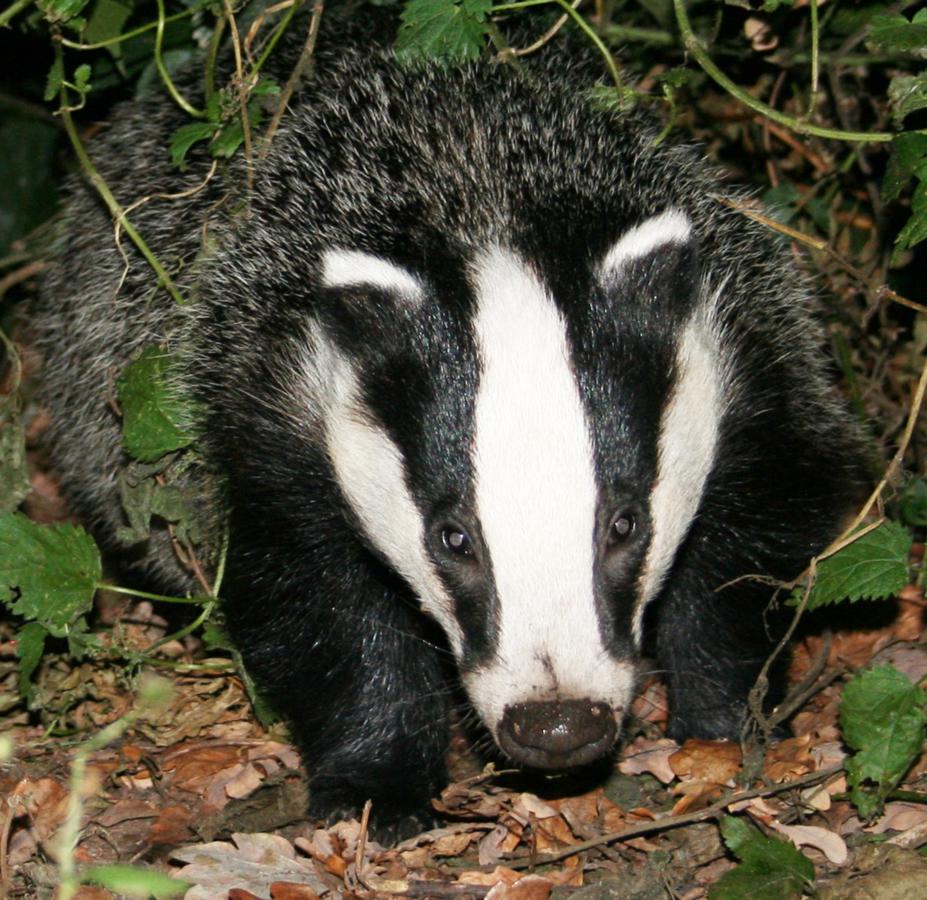Badger
(Meles meles)

Description
The yew (Meles meles Linnaeus,1758) is a carnivorous mammal of the Mustelidae family.It is a protected species.The species is also known as the common rate or European rate,to avoid confusion with other species of yew (such as the American rate or the honey rate ),as these animals inhabit much of Europe,as well as some portions of the Middle East and Central Asia.With its length and almost 15 kg of weight,this animal is one of the largest species of mustelidae.The appearance is almost bearish,with a robust body and short,strong legs with large hooves suitable for digging: the characteristic black mask on the white face makes the rate unmistakable.The yew is a nocturnal and peaceful animal that spends the day sleeping in one of the many burrows that these animals dig into their territory,and that are often shared with other animals: however,if harassed,it turns out to be an opponent fearful and tenacious.Dimensions: An adult rate measuring 60-90 cm in length,to which 11-24 cm in length of the tail are added,for a height at the withers of 25-30 cm: at the same age,the males are only slightly longer than the females,but considerably heavier.As observable in all the species that usually hibernate,the weight of the rate varies seasonally: in spring-summer an adult weighs between 7 and 13 kg,while during the autumn the weight increases up to 15-17 kg,with observation of heavy males up to 27.2 kg and cases of specimens of 30.8 and even 34 kg,which,if confirmed,would make by far the heaviest rate among terrestrial mustelids.Appearance: The yew has an unmistakable appearance among mustelids: a squat and robust body,with a small,elongated head with big ears,a taurine neck,legs and a short tail.The fur is thick and bristly on the back and sides and less dense on the belly,with an almost glabrous inguinal region: it is composed of long bristles 7-8 cm long,which cover a soft woolly undercoat.The coloring of the rate is very characteristic and easily recognizable.the back is silver-gray,with hues of straw-yellow hues.The tail is endowed with a very long and bristly coat of the same color of the back,although in the females there are also white hairs.The abdomen is brown,with a lower abdomen and an inguinal region that take on grayish shades.Throat,neck,chest and legs are black,and black are also the two bands that starting from the upper lip pass through the eyes and reach the ears,also black,forming the characteristic and unmistakable mask,about 2 cm thick at the base of the snout and up to 5 cm in the region of the temples.The face,the chin,the sides of the neck and the tip of the ears are of off-white color: it is thought that the facial coloring of the yew serves more as a warning to potential predators than for themimicry,being very easily sighted even during the night.During the summer,the badger fur becomes less thick and takes on shades that are more brownish.Cases of partial melanism,albinism,leucism and erythrodism are also known among the rates.The legs are digitigrade and column: the hind legs are shorter than the anterior ones,but all are provided with a bare plant and not retractile hooves,of curved shape and with an obtuse,horn-colored tip,able to dig.The claws of the yew are continuously growing,however especially those of the hind legs (about half the length of those of the front legs) tend to show signs of consumption with age.The head is elongated.In the male there is a sagittal crest that reaches one and a half centimeter height is much more pronounced than what can be observed in the female,which generally has a more slender and thin head and neck: as well as being an anchor of the masticatory musculature,the ridge also has a protective function.The eyes are small and dark brown,with round pupil : the ears are up to 7 cm long.The long,cylindrical snout ends in a muscular and flexible truffle,which is comparable to the snout of pigs : around the muzzle and the eyes are numerousvibrisse.The view of the rates is rather weak and is limited to moving objects and black and white,while the smell is very developed: the hearing of these animals is instead comparable to the human one.Inside the mouth there are usually 38 teeth,although the non-rash of the first premolars is not infrequent: the dentition of the rate suggests the omnivorous diet,with prominent canines,small incisors,non-specialized carnassials and strong molars.Even the intestine of the rate reveals its omnivorous habits: the only small intestine,for example,although lacking the cecum,with its 5.36 m of average length is longer than that of species of similar size but with a more carnivorous diet,like the red fox.At the base of the tail and in the perineal region there are odoriferous glands : the first secrete a creamy substance with a yellowish color and musky odor,while the latter secrete a yellow-brown fluid with a more pungent odor.Both sexes present three pairs of breasts,which however are more developed in the female.
Taxonomic tree:







